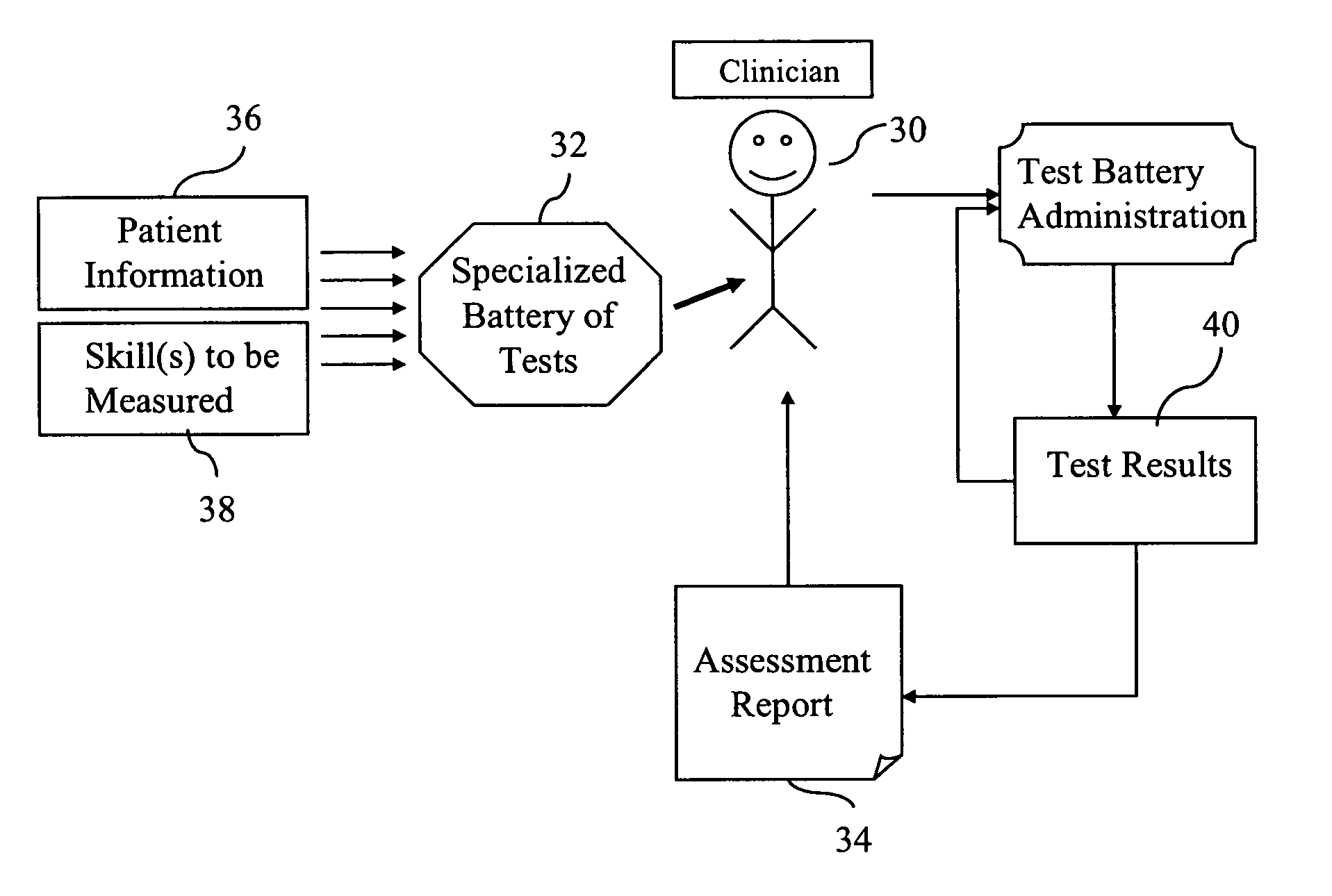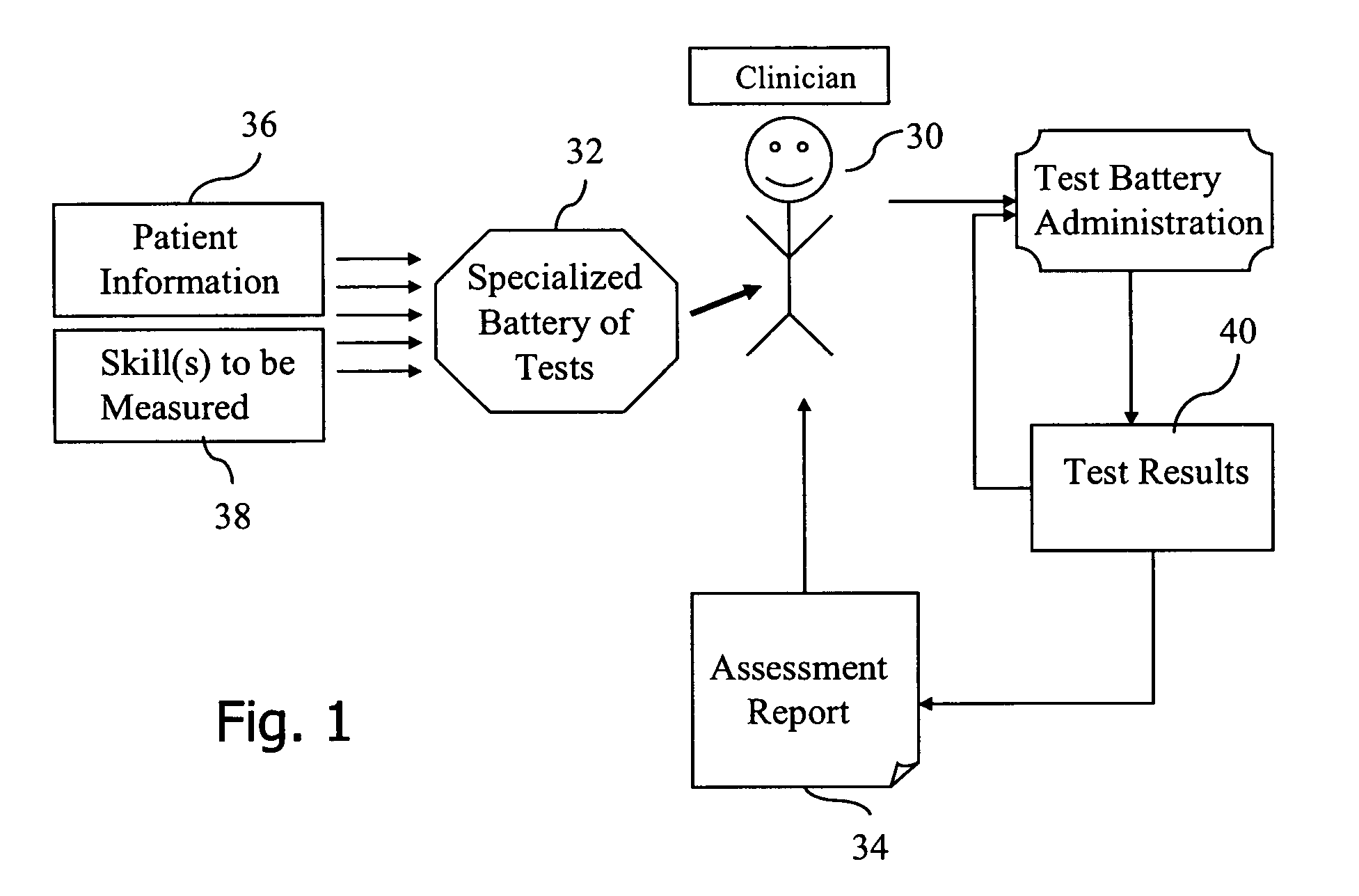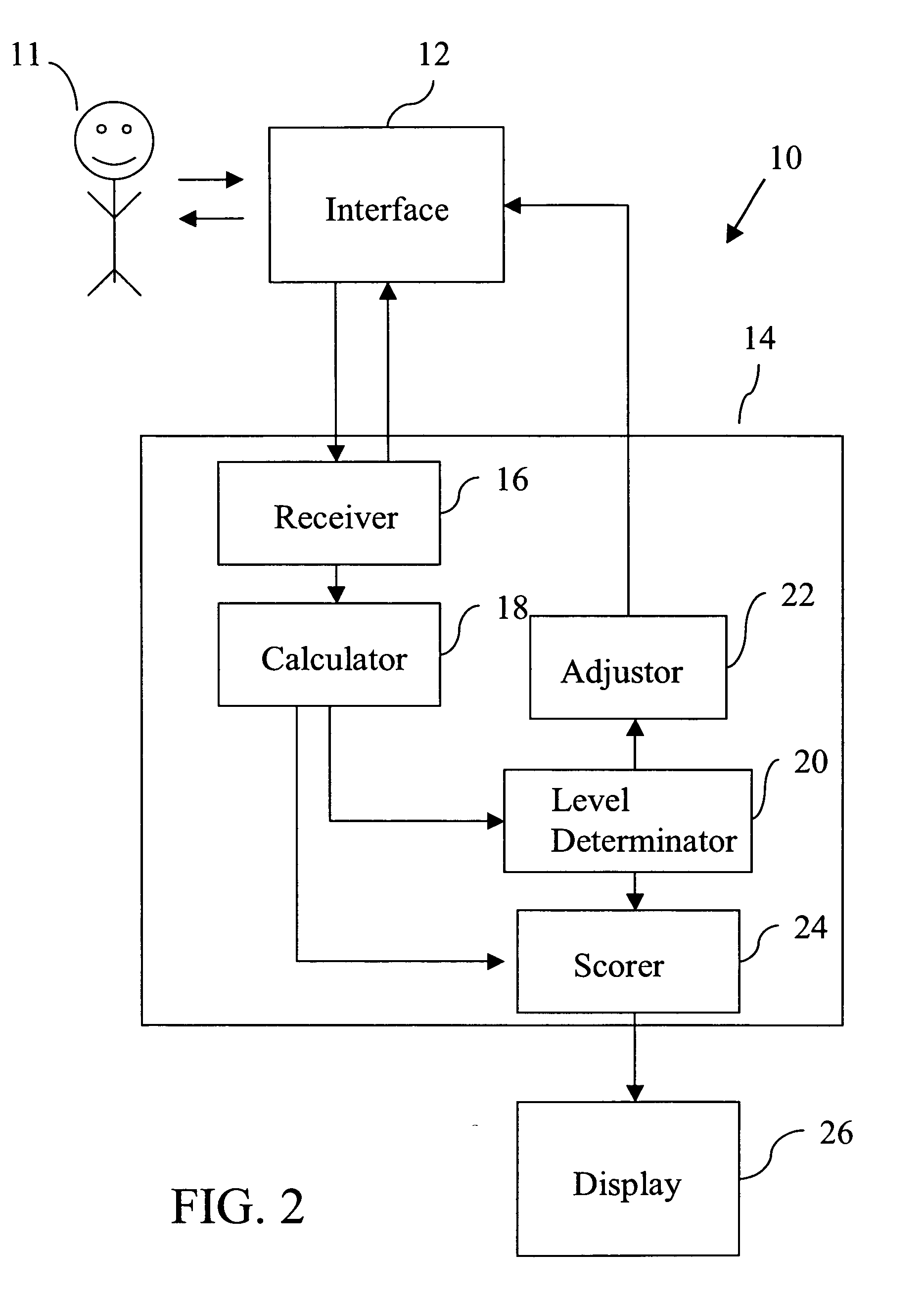Standardized medical cognitive assessment tool
a cognitive assessment and medical technology, applied in the field of standardized medical cognitive assessment tools, can solve the problems of bias in testing systems, test results are typically administered without adequate consideration of the skill level of the subject, and the evaluation and quantification of cognitive ability are a challenge for both scientists and clinicians
- Summary
- Abstract
- Description
- Claims
- Application Information
AI Technical Summary
Benefits of technology
Problems solved by technology
Method used
Image
Examples
example 1
[0142] A study designed to assess the discriminant validity of some of the computerized tests described herein as compared with that of traditional neuropsychological tests is detailed below, (see Dwolatzky et al., “Validity of a novel computerized cognitive battery for mild cognitive impairment,” BMC Geriatrics, 2003, 3:4).
[0143] Methods:
[0144] Participants were 98 elderly individuals, initially diagnosed as having mild cognitive impairment (MCI), mild Alzheimer's disease (AD), or as cognitively healthy, all according to well-known criteria and by consensus of evaluation teams led by dementia experts. A total of 30 individuals were in the MCI group, 29 individuals in the AD group, and 39 individuals in the healthy group. All groups were controlled for demographic and clinical characteristics.
[0145] All participants were given paper-based tests as well as a battery of computerized tests (the Mild Cognitive Impairment Battery) described in the present application. Specifically, kn...
example 2
[0152] A study designed to identify normal / abnormal cutoffs for detecting mild impairment with a system such as the one described herein on the basis of research data from individuals with a wide array of cognitive diagnoses and an appropriate normative sample is detailed below.
[0153] Methods:
[0154] Analyses were conducted on data from 822 participants in controlled research studies using a computerized testing system such as the one described in the detailed description section above. Each participant received an expert diagnosis, which was taken as the gold standard. Expert diagnoses were based on the judgment of physicians relying on patient history, physical examination, and ancillary laboratory or imaging data, as necessary. For patients with multiple visits, only data from the first visit was included. Only patients whose primary language (i.e.,most comfortable using, language used most often) was available as a computerized test language were included.
[0155] The tests samp...
PUM
 Login to View More
Login to View More Abstract
Description
Claims
Application Information
 Login to View More
Login to View More - R&D
- Intellectual Property
- Life Sciences
- Materials
- Tech Scout
- Unparalleled Data Quality
- Higher Quality Content
- 60% Fewer Hallucinations
Browse by: Latest US Patents, China's latest patents, Technical Efficacy Thesaurus, Application Domain, Technology Topic, Popular Technical Reports.
© 2025 PatSnap. All rights reserved.Legal|Privacy policy|Modern Slavery Act Transparency Statement|Sitemap|About US| Contact US: help@patsnap.com



